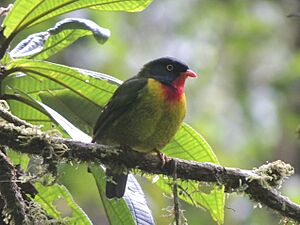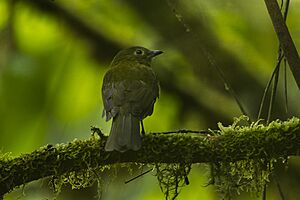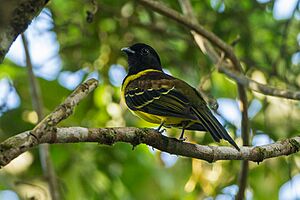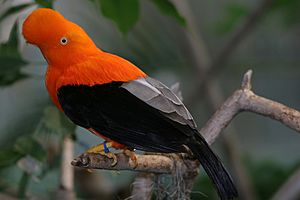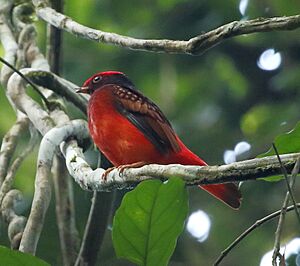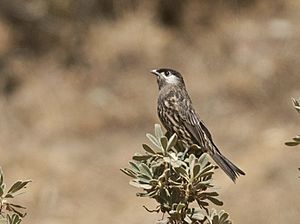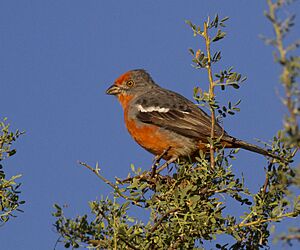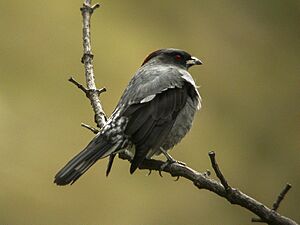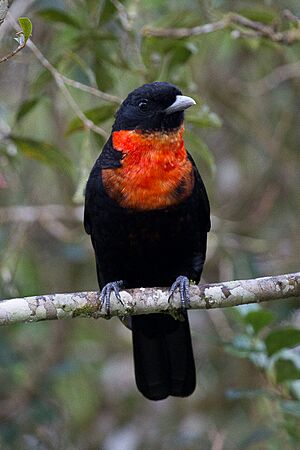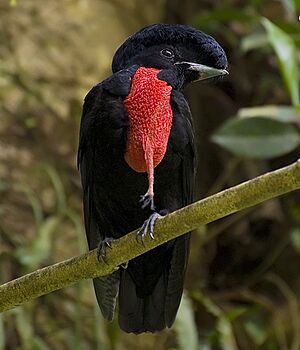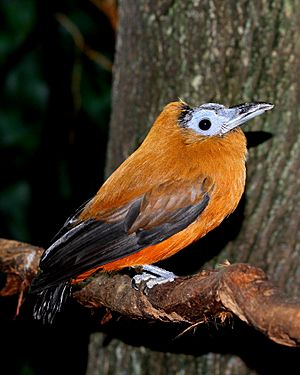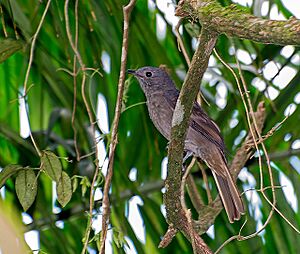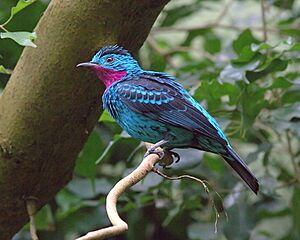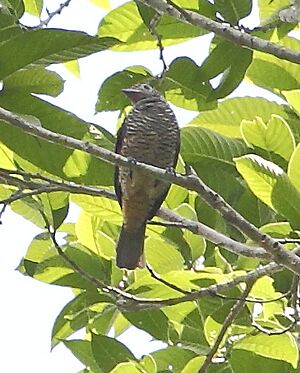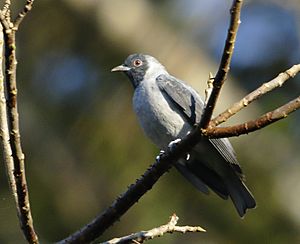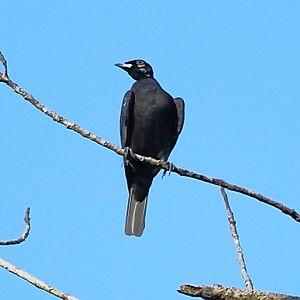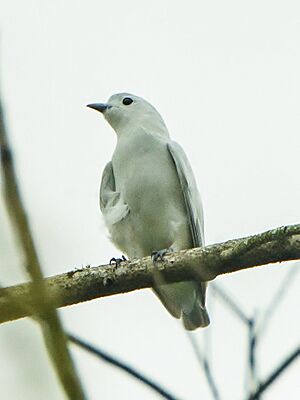Cotinga facts for kids
Quick facts for kids Cotingas |
|
|---|---|
 |
|
| Spangled cotinga (Cotinga cayana) | |
| Scientific classification |
|
| Kingdom: | Animalia |
| Phylum: | Chordata |
| Class: | Aves |
| Order: | Passeriformes |
| Parvorder: | Tyrannida |
| Family: | Cotingidae Bonaparte, 1849 |
| Genera | |
|
Many, see text |
|
 |
|
| Geographical range of the cotingas. | |
The cotingas are a big family of birds called Cotingidae. You can find them in Central America and the warm, wet parts of South America. These birds usually live in forests or at the edges of forests. They mostly eat fruit.
All cotingas have wide beaks with hooked tips. They also have rounded wings and strong legs. Their size can vary a lot! The fiery-throated fruiteater is tiny, only about 12 to 13 centimeters long. But the Amazonian umbrellabird is much bigger, growing up to 48 to 51 centimeters!
Contents
What Makes Cotingas Special?
Cotingas have many different ways of living together. About half of the cotinga species have both parents help raise their young. In the other half, only the female takes care of the babies.
Amazing Male Displays
In species where only the female raises the young, the male cotingas put on amazing shows to attract a mate. They often gather in special areas called leks. Because of this, the males in these species are often very colorful. For example, the Guianan cock-of-the-rock is super bright!
Other males have cool decorations. The umbrellabirds have a crest that looks like an umbrella on their head and long flaps of skin called wattles on their throat. Some cotingas, like the bellbirds and screaming piha, have very loud and unique calls that can be heard far away.
Where Males Display
Male cocks-of-the-rock display on the ground because they spend more time there. But other male cotingas, like those from the Carpodectes, Cotinga, and Xipholena groups, gather high up in trees to show off.
No matter how the males display, the females in all cotinga species are usually much duller in color than the males.
How Cotingas Raise Their Young
Cotinga nests can be very different, from tiny to very large. Many species build nests that are so thin you can see the egg right through them! This might make it harder for predators to find the nest.
Fruiteaters build stronger, cup-shaped nests. The cocks-of-the-rock are unique because they attach their mud nests to cliffs. Most nests are open cups or small platforms made of loosely woven plant material. They are usually placed in a tree.
Cotingas usually lay one to four eggs. The eggs hatch after about 15 to 28 days. The young birds are ready to leave the nest when they are about 28 to 33 days old.
Where Cotingas Live
Cotingas live in many different places. You can find them in humid tropical forests, open woodlands, and even coastal mangrove swamps. Sadly, cotingas are in danger because their homes are being destroyed.
Cotinga Families and Groups
The Cotingidae bird family was first named by a French scientist named Charles Lucien Bonaparte in 1849. As of 2021, there are 66 different species of cotingas, divided into 24 main groups (called genera).
Scientists have studied the DNA of cotingas to understand how they are related. They found that the cotinga family can be split into five main groups. This helps us understand the family tree of these amazing birds.
The table below shows some of the different groups of cotingas and a few examples of the species in each group:
| Image | Genus (Group Name) | Living Species Examples |
|---|---|---|
| Ampelioides |
|
|
| Pipreola |
|
|
| Snowornis |
|
|
| Carpornis |
|
|
| Rupicola |
|
|
| Phoenicircus |
|
|
| Zaratornis |
|
|
| Phytotoma |
|
|
| Phibalura |
|
|
| Doliornis |
|
|
| Ampelion |
|
|
| Querula |
|
|
| Pyroderus |
|
|
| Cephalopterus |
|
|
| Perissocephalus |
|
|
| Lipaugus |
|
|
| Procnias |
|
|
| Cotinga |
|
|
| Porphyrolaema |
|
|
| Conioptilon |
|
|
| Gymnoderus |
|
|
| Xipholena |
|
|
| Carpodectes |
|
Some birds that used to be considered cotingas are now placed in a different family called Tityridae.



